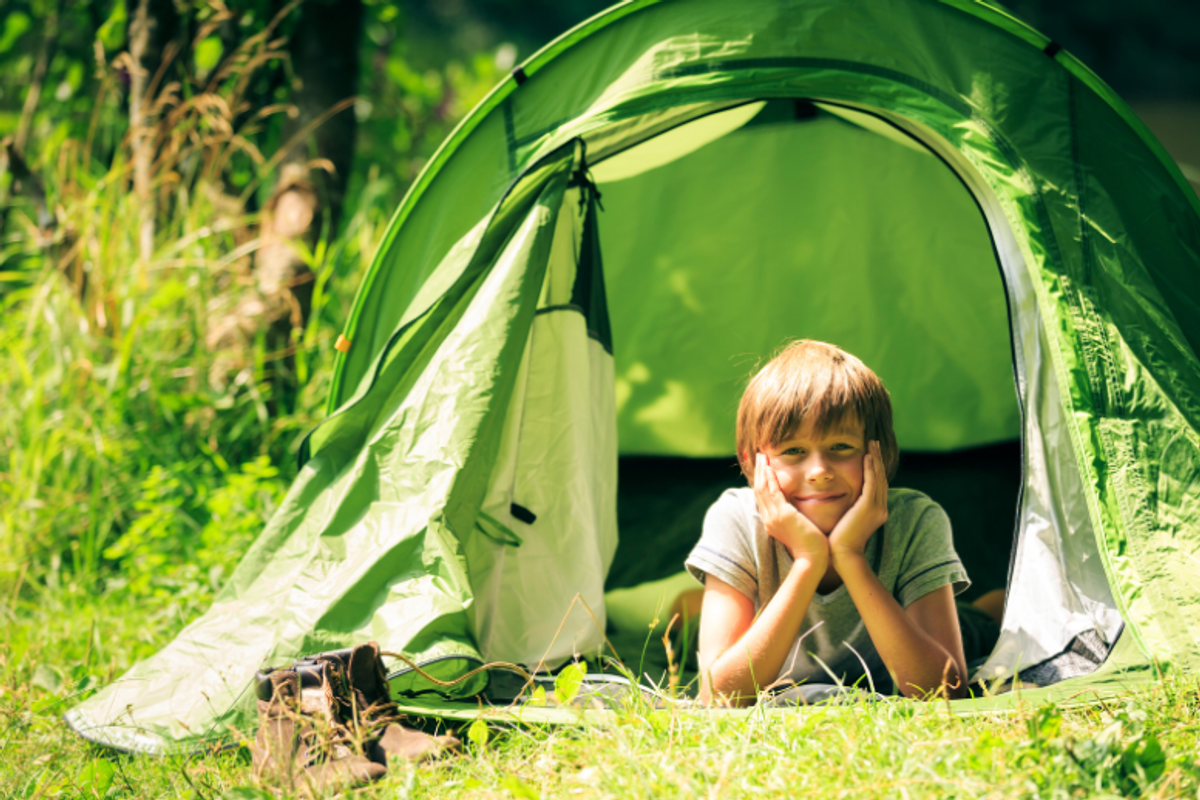Parents get wave of support for boldly allowing 7-year-old son camp outdoors by himself
It turns out the experiment only lasted for about 10 minutes.
7-year-old boy ventures out for short-lived camping trip.
Taking in the great outdoors while camping as a kid is often that first taste of freedom and independence for kids (even if it's right in your backyard). So when blogger Rhyan Caminske (@rhyancaminske) and her husband Carl's seven-year-old son asked if he could camp out in a field all by himself, they fully supported him.
In a heartwarming video shared on Instagram, the couple (along with their daughter) escort him to the nearby field with his fully packed luggage in tow. The family does a supportive send off before hanging around in a nearby parking lot to watch him unpack and savor his freedom--before he ultimately calls it quits for the comforts of home minutes later.
"Our 7-year-old son wanted to 'camp in a field' by himself," she captioned the video, adding, "We found out he doesn’t travel light….. 🤣😂🤣."
As the start of the video, the family pulls up to the field and begin to unload the car. They share a family hug and Carl says, "See ya later, bud," before Rhyan adds, "Don't let anyone take you, okay?" Their son replies, "Got it!" before his sister also tells him, "And don't forget to use the bathroom," as she points to the nearby facilities.
As their son wheels his luggage into the field with his blanket over his shoulder, he gives his family an assuring, "You're good!" They tell him they love him, and they hop back in the car and drive off to a far corner of the parking lot to keep tabs on him.

His sister expresses concern over his safety, but they reassure her that he will be okay and not to worry. "We're not actually leaving," Carl tells her.
To their surprise, he fully leans into the experience: he lays out his blanket and unpacks his suitcase, which hilariously contains essentials like his Nintendo, his Pokémon card collection, and a night light. "Full unpack of all his stuff," Rhyan says while laughing.
And the cherry on top: he pees on a nearby tree, encompassing prime boyhood as his parents laugh hysterically. "He's truly camping. I thought he was getting nervous," Carl says. "Nope! He just had to take a piss," Rhyan adds. Once he's done doing his business, he 'shocks' his family by running over to the car and announcing: "I actually don't want to go camping," he tells them. "I want to go home." Carl walks with him into the field to pack up his stuff, and the video ends.

The video got a rousing response from viewers, including some famous fans. Singer John Mayer commented, "That’s one special little dude who will go on to do great things in life," and Caminske replied, "@johnmayer thank you SO much 🥰 we are blown away by the positive response to this video and having others appreciate his awesomeness. 🥰"
Other commended them for the way they parented. ""Great parenting. They most likely knew he wasn’t ready for this but knew he wanted to try and they let him try. They let him make the choice. Gave him the freedom and security. And was there when he decided it wasn’t the time. Well done." Another added, "That was flawless parental execution." A final viewer wrote, "I just wanted to tell you that you guys are KILLIN it as parents!"

